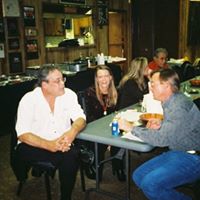Phillip A Sharp
age ~38
from Milford, KS
- Also known as:
-
- Phillipa Sharp
Phillip Sharp Phones & Addresses
- Milford, KS
- Elgin, OK
- Clayton, OK
- Fountain, CO
- Toledo, IA
- Colorado Springs, CO
- Fort Riley, KS
- Olathe, KS
- Ft Riley, KS
- Alta Vista, KS
Work
-
Company:Davis Polk & Wardwell LLP
-
Address:
Education
-
School / High School:Queensland University of Technology
Ranks
-
Licence:New York - Currently registered
-
Date:2009
Resumes

Phillip Sharp
view source
Phillip Sharp
view source
Phillip Sharp
view sourceLocation:
United States
Lawyers & Attorneys

Phillip Gordon Sharp - Lawyer
view sourceAddress:
Davis Polk & Wardwell LLP
Licenses:
New York - Currently registered 2009
Education:
Queensland University of Technology

Phillip Sharp - Lawyer
view sourceOffice:
Davis Polk & Wardwell LLP
ISLN:
921034528
Admitted:
2009
University:
Queensland University of Technology Brisbane, Australia, B.A., 2000
Law School:
Oxford University, England, B.C.L., 2007
Wikipedia

Phillip Allen Sharp
view sourcePhillip Allen Sharp (born June 6, 1944) is an American geneticist and molecular biologist who co-discovered RNA splicing. He shared the 1993 Nobel Prize in ...
Us Patents
-
Disposable Applicator
view source -
US Patent:61903485, Feb 20, 2001
-
Filed:May 20, 1999
-
Appl. No.:9/315888
-
Inventors:Harris A. Tiemann - Clayton OK
Phillip D. Sharp - Clayton OK -
International Classification:A61F 1320
A61F 902 -
US Classification:604 15
-
Abstract:A disposable applicator for implanting medicaments of various kinds into the human body without exposure of either the user or the recipient to pathogens of the other, and without exposure of either to latex rubber proteins. Differing variants may be sized variously for infants, children and adults, with various stop means for preventing insertion beyond a desired distance. In addition, other variants are particularly suited for use by untrained personnel or by persons with physical conditions which restrict their range of motion. A particularly preferred variant is sufficiently flexible so as to conform to body contours, thereby neither destroying nor irritating possibly sensitive skin tissue.
Name / Title
Company / Classification
Phones & Addresses
Principal
Lighthouse Cathedral
Religious Organization
Religious Organization
Kiamichi Christian Mission, OK 74536
PHILLIP SHARP LLC
VPJM LTD
Incorporator
GARDNER'S WOCO PEP STATION, INC
Isbn (Books And Publications)


DNA Tumor Viruses: Control of Gene Expression and Replication
view sourceAuthor
Phillip A. Sharp
ISBN #
0879691921
Plaxo

Phillip J Sharps
view sourceLittle Rock, AR
Googleplus

Phillip Sharp

Phillip Sharp

Phillip Sharp

Phillip Sharp

Phillip Sharp

Phillip Sharp
Tagline:
I am a future member of the USMC, I am currently in my last year of high school, but I have completed the USMC boot camp and I do intend to enter my enlistment after college and go in as an officer.
Bragging Rights:
Survived 12 weeks and a Crucible

Phillip Sharp

Phillip Sharp
Classmates

Phillip Sharp
view sourceSchools:
Dublin Scioto High School Dublin OH 1995-1999
Community:
Audrey Danner, Dustin Yost

Phillip Sharp
view sourceSchools:
Lone Oak High School Lone Oak TX 1990-1994
Community:
Shannon Thornton

Phillip Sharp
view sourceSchools:
Faith Academy Manila OR 1975-1979
Community:
Rhonda Miller, Duane Wilhite, Jonathan Payne

Phillip Sharp
view sourceSchools:
Carrollton High School Carrollton TX 1963-1967
Community:
Robert Robert, Sondra Kelly, Joyce Jenkins, Gerald Randles, Kenneth Souther, Dona Gurtler, Donna Nelson, Virgil Blackman, Bobbie Erwin, Dick Rodriguez, Otis Freeman, Viola James

Phillip Sharp
view sourceSchools:
Laverne High School Laverne OK 2005-2009
Community:
Alex Hickman, Ayla Dixon, Chelsey Rolf, Cameron Hulin, Brandy Firth, Wayleen Caswell, Kale Burlingham, Daniela Daniela, Kylee Crocker, Ashley Smith, Patricia Ramriez

Phillip Sharp
view sourceSchools:
Arkoma High School Arkoma OK 1975-1979
Community:
Janet Sidwell, Eddie Mcalister, Don Johnson, Trish Preston

Phillip Sharp
view sourceSchools:
Custer High School Custer City OK 1944-1957
Community:
Jack Fry, June Sauer, Lyle Dobbins, Gail Mccool, Gayle Agan, Danney Lidia, Violet Southwell, Patricia Fortner, Robert Tharp, Mary Evans

Phillip Sharp
view source
Phillip Sharp
view source
Phillip Sharp
view source
Phillip Sharp
view source
Phillip Sharp
view source
Phillip Sharp
view source
Phillip Sharp
view source
Phillip Sharp
view sourceYoutube
News

Boston’s dense health-sciences networks help the city to maintain its lead
view source- Although California has a strong venture-capital presence, too, the big difference for the Boston area is the presence of leading pharmaceutical companies many of which are just a walk from the Massachusetts Institute of Technology (MIT) and Harvard, says Nobel laureate Phillip Sharp, who holds
- Date: Nov 20, 2024
- Category: Your local news
- Source: Google

MIT developing framework for Covid-19 vaccinations on campus
view source- I plan to be vaccinated assoon I can, and I am urgingeveryone at MIT and well beyond to get themselves vaccinated at theirfirst opportunity, says Institute Professor and Nobel laureate Phillip Sharp, whose pioneering research in the 1970s helped pave the way for todays generation of mRNA vacci
- Date: Jan 29, 2021
- Category: More news
- Source: Google

New skeletal disease found and explained
view source- an abnormal expression of several important genes in the cartilaginous growth plates and the ends of the long tubular bones. These studies were done in collaboration with Hiroshi Suzuki, researcher at the Massachusetts Institute of Technology in the lab of Phillip Sharp, Nobel laureate in medicine.
- Date: Feb 25, 2019
- Category: Headlines
- Source: Google

Local scientists worry about NIH's proposed cap on funding for individual labs
view source- point system could penalize work done under multi-institutional NIH grants that involve researchers from multiple labs, often in the Boston area. Science in Massachusetts is done in a collaborative mode where researchers share data and expertise, said Phillip Sharp, a co-founder of Biogen Inc. who
- Date: Jun 07, 2017
- Category: Health
- Source: Google

From basic research to saving lives — the Spinraza story
view source- In the spring of 1977, Drs. Richard Roberts of CSHL and Phillip Sharp, then of MIT, first described RNA splicing a fundamental mechanism in cells that regulates how our genes are expressed, Stillman said.
- Date: Dec 26, 2016
- Category: Health
- Source: Google

107 Nobel laureates sign letter blasting Greenpeace over GMOs
view source- The letter campaign was organized by Richard Roberts, chief scientific officer of New England Biolabs and, with Phillip Sharp, the winner of the 1993 Nobel Prize in physiology or medicine for the discovery of genetic sequences known as introns. The campaign has a website, supportprecisionagriculture
- Date: Jun 29, 2016
- Category: Business
- Source: Google

Cells Read DNA Backward and Forward: Direction is the Key
view source- "This is part of an RNA revolution where we're seeing different RNAs and new RNAs that we hadn't suspected were present in cells, and trying to understand what role they have in the health of the cell or the viability of the cell," said Phillip Sharp, one of the MIT researchers who worked on the stu
- Date: Jun 25, 2013
- Category: Sci/Tech
- Source: Google

Study Elucidates How Cells Make Sense of Transcriptional Direction
view source- MITs Phillip Sharp, Ph.D., and his colleagues this week show that, in murine embryonic stem cells, asymmetric sequence determinants flanking gene transcription start sites control promoter directionality by regulating promoter-proximal cleavage and polyadenylation. Writing in Nature, Dr. Sharps
- Date: Jun 25, 2013
- Category: Sci/Tech
- Source: Google
Get Report for Phillip A Sharp from Milford, KS, age ~38





